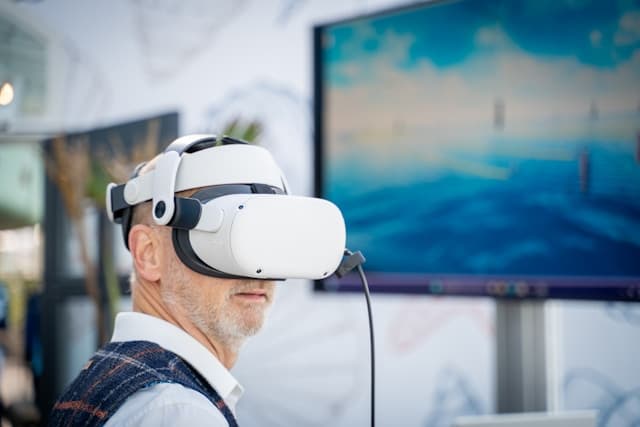
How to Gamify User Engagement on Social Media

Table of Contents
Gamifying user engagement on social media is quickly becoming one of the most innovative ways brands can connect with audiences in 2025. By integrating game-like elements into their platforms—such as challenges, points, and leaderboards—businesses can increase interaction, drive loyalty, and create a more immersive experience. This strategy is especially powerful in a digital ecosystem where attention spans are shrinking and users crave more dynamic, rewarding content.
Learn more about the crucial role of gamification in boosting social media engagement.
Gamification taps into fundamental psychological principles to foster motivation and retention. Whether it's the dopamine rush from earning virtual rewards or the sense of competition triggered by leaderboards, gamification appeals to both intrinsic and extrinsic motivators. Notable campaigns—like M&M's interactive Eye-Spy Pretzel game or Heineken's Star Player app—show how playful, strategic engagement can boost brand awareness and spark viral momentum. Starbucks' Rewards program is another standout, using points and stars to drive repeat purchases and deepen customer loyalty.
But while the benefits of gamification are clear, it's not without challenges. In sectors like non-profits, excessive competitiveness may backfire, undermining the spirit of collaboration. Additionally, ethical concerns around manipulation or data privacy require careful design to maintain user trust. That's why successful gamification requires a delicate balance—blending creativity with strategy, and innovation with responsibility.
Case Studies
M&M's Eye-Spy Pretzel Campaign
M&M's Eye-Spy Pretzel campaign is a classic example of simple yet highly effective gamification. It featured an image filled with M&M's candies, where participants were challenged to find a hidden pretzel. The campaign's accessibility and visual appeal made it viral, drawing massive attention and promoting a new product flavor. It showcased how lighthearted gamified experiences can drive engagement and brand awareness.
Heineken's Star Player App
Heineken launched the Star Player app alongside the UEFA Champions League, allowing users to predict live match outcomes and compete for points. Leaderboards added a competitive edge, and users stayed engaged throughout the match, enhancing brand interaction. This campaign exemplifies how real-time gamification can deepen viewer connection and generate buzz in entertainment and sports marketing.
Starbucks Rewards Program
Starbucks' gamified loyalty system allows customers to earn stars through purchases, redeemable for rewards like free drinks. The program's structured progression and visual tracking offer customers a clear sense of achievement, increasing loyalty. With millions of members and sustained growth, this strategy proves how gamifying customer experiences can elevate long-term engagement.
Duolingo Language Learning
Duolingo revolutionized language learning with a gamified experience that includes points, streaks, level-ups, and leaderboards. Its fun, competitive environment motivates users to continue learning while offering personalized encouragement. This model shows how gamification enhances retention and learning outcomes, even in traditionally challenging spaces like education.
Pepsi's Loot for Labels
Pepsi's Loot for Labels invited users to collect product labels to win prizes, introducing a competition element into everyday purchases. This tangible gamification method drove repeated brand interaction and increased product sales, highlighting how offline-to-online gamified promotions can fuel consumer enthusiasm.
Challenges and Considerations
The Role of Purpose
For gamification to succeed—especially in social impact sectors—it must reflect the user's intrinsic motivations. Purpose-driven engagement, such as collective achievements or shared storytelling, resonates more than competitive elements like leaderboards, which may deter collaboration in non-profit contexts.
Psychological and Cultural Sensitivity
Effective gamification isn't just about flashy features—it requires a deep understanding of user psychology and the surrounding culture. Knowing what motivates different audiences helps brands design nudges and experiences that feel personal and authentic, rather than manipulative or superficial.
Ethics and Fair Play
Transparency is essential in gamified campaigns. Clear rules, fair prize distribution, and privacy-conscious design build trust and prevent backlash. Ethical compliance must be a foundational pillar—especially when data collection is involved or when competitions have material rewards.
Encouraging Positive Interactions
Rather than pressure-based incentives, brands should foster uplifting and enjoyable experiences. Recognizing even small achievements and promoting community interaction leads to more sustained, authentic engagement over time.
Using Data to Refine Strategy
Continually tracking how users interact with gamified features allows for smarter decisions. Metrics like participation rates, time spent, and satisfaction scores help optimize experiences and improve future iterations. Data is the key to fine-tuning strategies for long-term success.
Understanding Audience Demographics

Age
Millennials and Gen Z users are particularly drawn to gamified elements like challenges, streaks, and real-time interaction. Brands targeting these groups can maximize impact through visually appealing rewards and social sharing features.
Gender
Competitive features tend to appeal more to male users, while collaborative and narrative-driven elements often resonate more with female users. A balanced approach ensures broad appeal and inclusivity.
Geographic Differences
Cultural preferences shape how gamification is received. Urban users may enjoy AR filters and mobile-based treasure hunts, while simpler, offline-integrated methods may be more effective in rural areas. Tailoring tactics to local behavior enhances reach and relevance.
Sentiment and Social Listening
Monitoring how different groups respond emotionally to campaigns is crucial. Tools like sentiment analysis can help brands identify if gamified strategies evoke excitement, trust, or frustration—and adjust accordingly for better resonance.
By understanding how to gamify user engagement on social media, brands can create immersive, rewarding, and effective campaigns that not only captivate their audiences but also foster loyalty and sustained growth. As platforms and technologies evolve, those who embrace gamification as a creative engagement strategy will stay ahead in the competitive social landscape.
For brands looking to automate and personalize their social engagement at scale, ReplyPilot offers AI-powered tools that streamline real-time interactions and amplify the results of your gamified campaigns. Discover how AI-powered social media management is revolutionizing digital strategy.
Continue reading
More posts about creative engagement strategies




